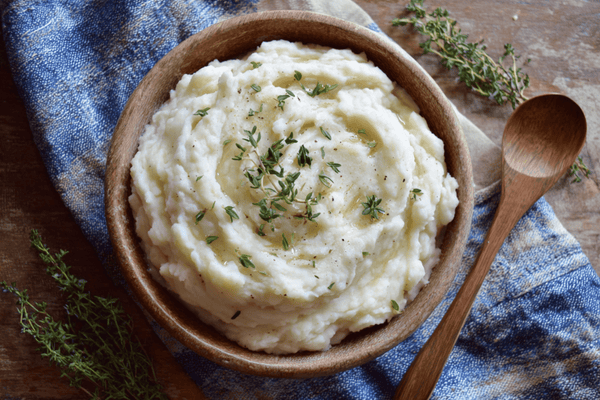 Keeping your knives sharp is of the utmost importance. If you don’t, then you will notice that they stop performing as they once did and the blade can actually be more dangerous. But one problem that a lot of people face is that they aren’t sure how to properly sharpen a knife.
Keeping your knives sharp is of the utmost importance. If you don’t, then you will notice that they stop performing as they once did and the blade can actually be more dangerous. But one problem that a lot of people face is that they aren’t sure how to properly sharpen a knife.I won’t lie, there is something of a knack to knife sharpening and you certainly need to practise if you’re going to get it spot on. There are Japanese knife sharpening pros that have honed their skills to a fine art but it’s nothing you can’t improve on at home given the right techniques.
A question that most people ask when they first start sharpening knives is should you push or pull when sharpening a knife.
Most pros would agree that pulling the blade edge across the whetstone produces the best results. Not only will it bring the knife to its sharpest but it’s also a much more effective way to remove chips and imperfections from the blade.
If you’re a total knife sharpening newbie then don’t worry. This guide is going to explain everything you need to know to get those blades sharpened to perfection.
Table of contents
Do You Push or Pull When Sharpening a Knife on a whetstone?
 One of the first things that you should think about when deciding whether to push or pull a knife while sharpening is the orientation of the cutting edge. The best way to assess this is to look at whether the edge trails or leads as you push or pull it.
One of the first things that you should think about when deciding whether to push or pull a knife while sharpening is the orientation of the cutting edge. The best way to assess this is to look at whether the edge trails or leads as you push or pull it.Whetstones are one of the most common methods for sharpening a knife and they are certainly the preferred choice of professionals. However, you have to consider that, when you are sharpening a double bevel knife, the motion will change depending on which side you are currently sharpening. However, most people would agree that, when the knife edge faces away from you, you should pull the blade towards you in the pull method so in an edge trailing stroke.
In order to create this motion, you will need to begin with the blade at the far side of your flat stone then bring the knife towards you so that the entire length of the blade moves across the whetstone.
When you have finished each stroke, you should have moved the knife from the far side of the stone and it will have ended up at the part nearest you. The first part of the stroke begins at the knife’s heel but at the end of the stroke, it will have moved to the tip.
However, you can reverse this motion and push the knife in the opposite direction which is best when the sharp edge is facing towards you. Start at the point on the whetstone closest to you and push the blade down to the opposite side that is farthest from you.
In reverse to the previous motion, you would start with the tip of the blade touching the whetstone and when you get to the other end, it will be at the heel.
It’s important to note that each of these motions should be separate. If you look at a pro knife sharpener, it might seem that they are simply dragging the knife back and forth without lifting it off the stone but that is not the case and certainly not how you should be sharpening your best kitchen knives.
Notes On Pushing and Pulling With the Sharp Edge When Sharpening a Knife
One thing that I keep seeing time and again in sharp knife discussion forums is that different people have different techniques for sharpening their knives. I even saw one discussion where a person suggested that ‘as long as it feels right for you then why not?’.But I hasten to disagree with this as there are some ways of sharpening a knife that could damage the blade so you always need to be careful.
There are some that like to use the sharp edge to lead when using a sharpening stone but this isn’t something I am going to advise since there is a lot of controversy surrounding it. There are a couple of reasons that leading with the sharp edge might not create the desired result.
Firstly, there is a risk of the sharper edge digging into the whetstone. This may cause the blade to dull which is obviously the complete opposite of what we are trying to achieve. Secondly, you will find that you don’t achieve such a refined edge as it is never going to be as smooth. Since the stone is abrasive, that edge will feel a little rougher and more jagged which isn’t a good thing.
While there are some people that prefer this method, I would always suggest trailing with the sharp edge as you’ll get a smoother result and a sharper cutting edge.
Should You Apply Pressure When Sharpening a Knife?
As well as wondering whether you should push or pull when sharpening a knife, a lot of people want to know how much, if any, pressure you should apply. A lot of people apply far too much pressure when they begin sharpening their knives and this can damage the blades.
You do need to apply a certain amount of pressure but this should be really light and only come from your fingers; not your whole hand. The whetstone is abrasive enough to do the work for you so you won’t need to go over the top where pressure is concerned.
Moreover, if you apply too much pressure then this is going to wear you out more quickly so why waste your energy?
If you put far too much pressure on when sharpening your knife, you may find that you cannot maintain the correct sharpening angle, the blade chips, or is otherwise damaged so this is something you will want to avoid.
Types of Knife Sharpeners
When deciding whether to push or pull a knife while sharpening, you also have to think about the type of sharpening tool you are using. There are some that require you to push whereas others need a pulling action. Here are some of the most common types of knife sharpeners and how best to use them.● Pull-through knife sharpeners are manual tools that, as the name suggests, require a pulling action. You pull the blade through the tool leading with the heel and ending up at the tip. You get a nice smooth result and even pressure as you move the blade through the tool.
● Electric knife sharpeners require the user to start with the heel and pull the blade so that you end up at the tip. However, there are some that use both a pushing and a pulling motion so it’s important to check the instructions before use.
● Whetstones are shrouded in controversy when it comes to whether you should push or pull but in most cases, we would suggest pulling is best.
● Belt sharpeners feature an abrasive belt which requires the user to choose between a pushing or pulling motion since both are effective when using this tool
How to Sharpen a Left-Handed Knife
 One thing that a lot of people become confused about when it comes to knife sharpening is whether they need to adjust their technique when sharpening a left-handed knife.
One thing that a lot of people become confused about when it comes to knife sharpening is whether they need to adjust their technique when sharpening a left-handed knife.Let’s start by saying that left-handed knives are always single bevel knives and the bevel will be on the opposite side to a right-handed blade so that the user can more effectively cut the food. We have a detailed guide on left-handed knives here.
However, while the bevel is on the opposite side and should be sharpened to match this, the technique that you use will be exactly the same. Most people would agree that it is easier to sharpen a left-handed knife using a whetstone as this will produce the most accurate results.



